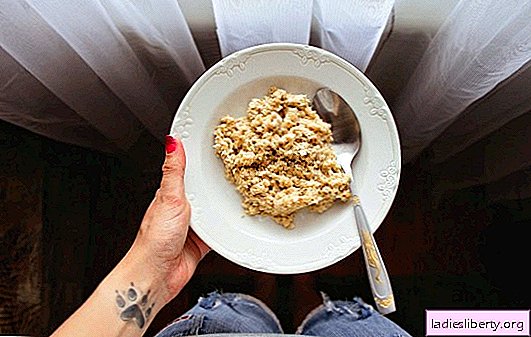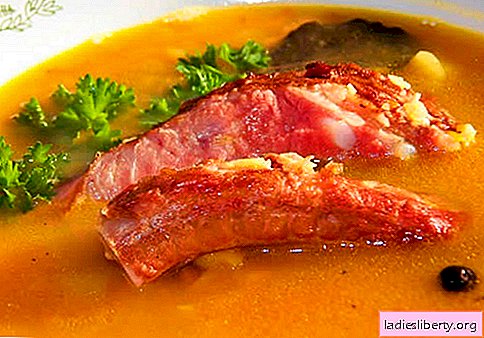
This small animal with barely noticeable eyes can bring a lot of unpleasant minutes to the gardener, settling in his garden. And he with strong paws, like blades with strong claws, tears through the soil, damaging all crops growing on the site. The mole tirelessly digs the earth, creating huge lengths of passage - highways reaching several hundred meters in length, in search of food.
Most gardeners perceive moles exclusively as harmful animals, although these creatures, leaving slides of fresh land on the surface of a beautiful lawn, destroying pests and loosening the soil, benefit your site.
To determine what the benefits of moles are, you can evaluate all the possible factors of its impact on the site.
What kind of mole is he?
The main harm from moles is that these animals have great potential to destroy lawns and beds with vegetables. Animals are often confused with rodents, but in fact they are insectivorous animals. Its food includes various underground insects, their larvae, slugs. They hardly eat plant food, they can even starve to death if only vegetarian food is available.
They do not intentionally damage the plant roots, just to satisfy the mole’s energy needs, it is necessary to search for food all the time. He sleeps, he is very small, he needs to work constantly. If the animal has nothing to eat, he cannot dig moves and dies after several hours. Within 24 hours, the mole breaks the course by several tens of meters, he needs them to search for food.
Animals are adapted to life in the dark, they are almost blind. But instead of sight, the mole has a sensitive touch, good hearing and a keen sense of smell. He digs the soil with large paws like a shovel, dirt does not get into the small eyes covered with membranes. The nostrils are turned slightly to the side so that the soil does not fall into them, the ears are not outwardly visible.
• Taurus no more than 100 gr in weight and up to 15 cm long;
• The paths necessary to search for larvae and earthworms are located at a depth of 50 cm from the soil surface;
• The nesting chamber of the animal is securely hidden 2 meters inland. The mole creates complex labyrinths necessary for finding food. In autumn, the animal constantly works, procuring supplies for the period of cold weather.
Moles live for at least four years, after melting snow they come in the mating season. Females bring babies after forty days of pregnancy, up to 9 cubs can be born at a time. After about forty-five days pass, the babies will catch up with their parents in size. Moles molt 3 times a year, probably because they need to constantly squeeze through narrow passages.
Mole's Food Paradise
Some people are mistaken in the belief that these animals only eat plant foods. In fact, moles destroy ants, wasps, flies and a bear. Moving underground, these creatures turn into predators terrible for any worms and insects, they can even cope with lizards, frogs and small snakes that accidentally fell into a hole.
But the mole, however, among other inhabitants of the underworld prefers earthworms (in the diet of the animal, the number of worms can reach 85% of the total amount of food), large larvae of insects and beetles, even save them for the winter. Especially during the search for victims, a small digger creates an extensive network of moves and after a while goes around them in search of fresh prey.
Living close to a person leading his farm and cultivating the soil, the animal enters a food paradise. This happens because the soil in the vicinity of the house is moist, soft and fertilized, it attracts a huge amount of living things. And in the winter, the mole continues to create passages, leaving them with musky secretions that attract new victims.
The mole works a lot and consumes a lot of energy, for this reason he eats up to 30 g of food at a time, and in 24 hours he can dig up to thirty meters of the course and devour a volume of food equal to the weight of the whole animal.
What is the use of moles in the garden
Do these animals eat rodents? If they are small and hit the mole, then yes! Thus, he helps the owner of the house a little, exterminating not only various pests of the garden, but also gray rodents. But there are still benefits from moles:
1. The animal is a wonderful digger, digs soil with pleasure, digging a depth of up to a meter, at the same time enriches the upper layer of soil with minerals (raises them from the lower layers), helps to saturate the fertile layer with air;
2. Diggers destroy harmful insects;
3. Eat weed seeds;
4. Their beautiful and durable fur is valued as furs. Fur coats made of such material were popular even in the days of Kievan Rus. During this period, worm products cost much more than sable fur coats, and to present them meant to show gratitude or admit a woman sympathy.
There are several reasons for the high cost of a mole fur coat. The fur of this animal is very thick, this quality is inherent in a few fur-bearing animals. Fur coats from mole’s fur are chosen by women who are ready to pay a lot for her, accustomed to living in luxury. If you have a desire to become the mistress of this exclusive product, you will have to pay a decent amount.
Why is a mole considered a pest?
At first, looking at this soft and sweet little animal, you do not feel negative feelings. Why is it believed that it harms the owners of the garden, if we take into account the fact that moles in the garden eat rodents and harmful insects? The above advantages are good, but the diet of these creatures is rich, and they destroy not only harmful inhabitants of the soil, but also earthworms, which improve the soil and increase the yield.
Moles are very fond of worms, and will dig all around until this delicacy is over. In addition, the matter is not even in the taste preferences of the mole, but in how this happens, since they themselves, unwittingly, can cause the death of garden and garden plantings.
Tearing the beds like a “bulldozer” they dig up bushes and trees, cut flower beds and vegetable plantations, and other plants, their roots turn out to be empty, stop receiving food and die as a result.
Moles are more difficult to detect, on the treated area than in the wild, they are assisted by a person loosening the soil. As a result, the mole does not need to throw soil to the surface, it is just necessary to press it into the walls of the tunnel and for this reason the animal is difficult to notice. So zealous gardeners suffer, and they can’t understand why the crop dies, even with excellent care.
If you have no moles on the site, and heaps of fresh soil do not appear, then it is advisable to immediately enclose the territory of your site with a fine metal mesh through which earthworms can crawl, but the moles cannot crawl. To do this, dig a ditch 1 meter deep along the perimeter of the site, lay a steel mesh in it, leaving a length of 50 centimeters above the surface.
Attention! PWhen moles appear, you should not try to expel them, filling their passages with water. In this way, you will not reduce the harm of moles, but you can only turn your site into a swamp, and provoke the formation of new tunnels, which the animals will no doubt make again to get around places flooded with water.











